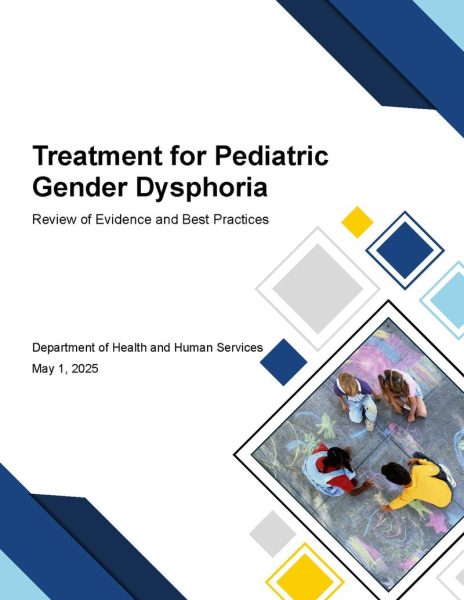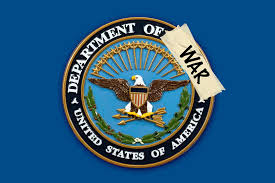 Controversy has arisen upon the release of a report called Treatment for Pediatric Gender Dysphoria: Review of Evidence and Best Practice, released by the U.S. Department of Health and Human Services on May 1st, 2025. The reason for this controversy is due to its misrepresentation of transgender individuals, questionable use of sources, possible harmful effects on LGBTQ+ members, and an inability to disclose the names of the authors.
Controversy has arisen upon the release of a report called Treatment for Pediatric Gender Dysphoria: Review of Evidence and Best Practice, released by the U.S. Department of Health and Human Services on May 1st, 2025. The reason for this controversy is due to its misrepresentation of transgender individuals, questionable use of sources, possible harmful effects on LGBTQ+ members, and an inability to disclose the names of the authors.
Those who have read the report by the Department of Health and Human Services (HHS) have begun to question the value and safety of gender-affirming care for the youth of the community, that is a part of the transgender community. Much controversy has arisen from the “experimental” and “unethical” suggestions that are promoted in the article, such as puberty blockers and hormone replacement therapy. Because of this, people have been led to believe that the reason the article did not include the names of their authors is because of a potential bias in writing it, suggesting that the authors are not writing with scientific evidence as expected, but instead they are promoting their ideas about the transgender community.
Furthermore, a medical organization called the American Academy of Pediatrics (AAP) has shown criticism towards the HHS report, for “bypassing medical expertise and scientific evidence”. On another note, the AAP suggests that they are promoted by activists rather than real scientific evidence. Moreover, the American Psychological Association (APA) believes that the report is trying to argue that psychotherapeutic treatment should aim to explore and understand gender identity, but prevent adolescents from deciding changing their gender identity. The HHS report mainly advocates for “gender exploratory therapy”, which is a type of psychotherapy that was created to delay and/or even prevent gender transition. People criticize how this approach is similar to discredited conversion therapy practices, which aim to change an individual’s gender identity or sexual orientation.
 Several Associations have shown concerns about the HHS report. For one, the World Professional Association for Transgender Health (WPATH) and the United States Professional Association for Transgender Health (USPATH) released a joint statement that stated that the HHS report was creating misinterpretations about existing research and disregarded expert statements ade by seasoned professionals who have worked with the topic of transgender identities and and gender diversity for years. The controversy behind the release of the article, Treatment for Pediatric Gender Dysphoria: Review of Evidence and Best Practice (HHS), is due to the misrepresentation of transgender individuals, questionable use of sources, and possible harmful effects on LGBTQ+ members, could be due to the new budget cuts applied to programs having to do with the LGBTQ+ community. The Trump administration proposed a cut of $2.67 billion to programs that support LGBTQ+ communities; this includes essential health research and support services that are necessary for these communities. While the administration behind the HHS report argues that it is necessary for ensuring the safety of young individuals throughout their transgender journey, medical professionals and big administrations believe that the report was politically motivated to establish medical practices on the transgender community.
Several Associations have shown concerns about the HHS report. For one, the World Professional Association for Transgender Health (WPATH) and the United States Professional Association for Transgender Health (USPATH) released a joint statement that stated that the HHS report was creating misinterpretations about existing research and disregarded expert statements ade by seasoned professionals who have worked with the topic of transgender identities and and gender diversity for years. The controversy behind the release of the article, Treatment for Pediatric Gender Dysphoria: Review of Evidence and Best Practice (HHS), is due to the misrepresentation of transgender individuals, questionable use of sources, and possible harmful effects on LGBTQ+ members, could be due to the new budget cuts applied to programs having to do with the LGBTQ+ community. The Trump administration proposed a cut of $2.67 billion to programs that support LGBTQ+ communities; this includes essential health research and support services that are necessary for these communities. While the administration behind the HHS report argues that it is necessary for ensuring the safety of young individuals throughout their transgender journey, medical professionals and big administrations believe that the report was politically motivated to establish medical practices on the transgender community.







